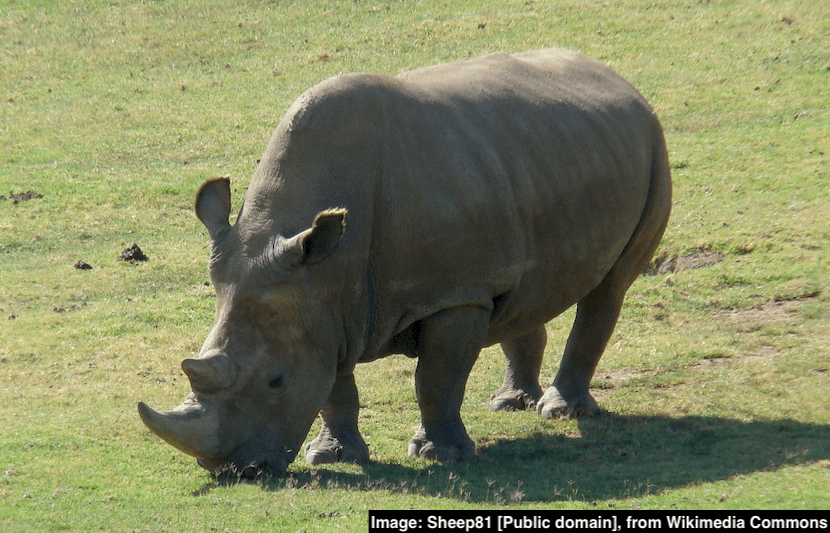Researchers from Cardiff University and the University of Venda may have found a way to save the northern white rhinoceros from extinction.
The northern white rhino is currently the most endangered mammal in the world.
In March, the species made headlines with the death of its last male, Sudan, who had been living at Ol Pejeta Conservancy in Kenya while under the protection of armed guards.
Now, only two post-reproductive females remain.
But, to much surprise, scientists may be able to save the species from extinction by using the genes of the similar southern white rhinoceros.
“By looking at the white rhino’s population history we’ve been able to establish that there was contact between northern and southern rhino populations throughout history,” Isa-Rita Russo, a research associate in the School of Biosciences at Cardiff University and co-author of the study, said in a statement.
“This is an exciting find! Genetic proof of contact between the populations suggests it may be possible to successfully rescue the northern white rhinoceros using southern white rhinoceros genes to create embryos, although further data would need to be collected to confirm this,” she continued.
When Sudan died, many people considered it the end of a historically-loved species. They had survived the last Ice Age, but they couldn’t escape from the age of humans.
The population of the southern white rhinoceros dipped to its lowest numbers around 1900, but has since grown to be the world’s most abundant rhino. The northern white rhino, on the other hand, reached its modern peak population in the twentieth century, but started rapidly declining during the 1970s.
Additionally, the researchers found that population decline of the two species throughout history has been very different. The population of northern white rhinos started declining nearly 1,370 years ago, and the southern white rhino population didn’t start lowering until colonialism 400 years ago.
“It appears that the white rhinoceros is no stranger to low genetic diversity, as our results show that the species was subjected to several climatically and anthropogenically driven population declines, which would have reduced and compressed genetic diversity in the past,” Yoshan Moodley, a professor in the Department of Zoology at the University of Venda, South Africa, and co-author of the study, said in a statement.



